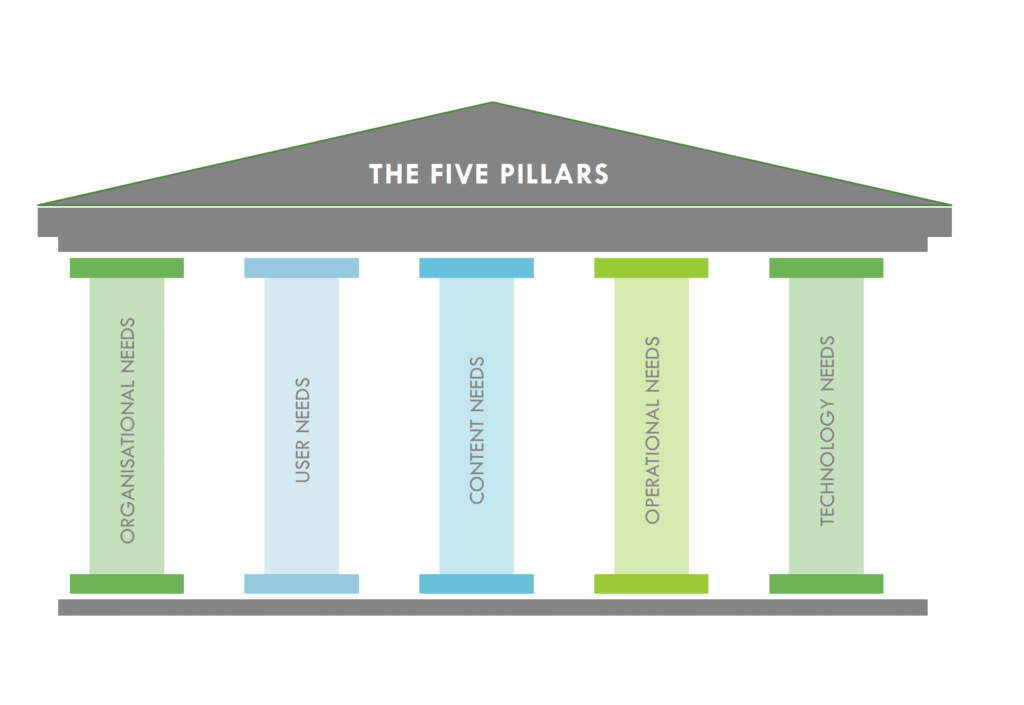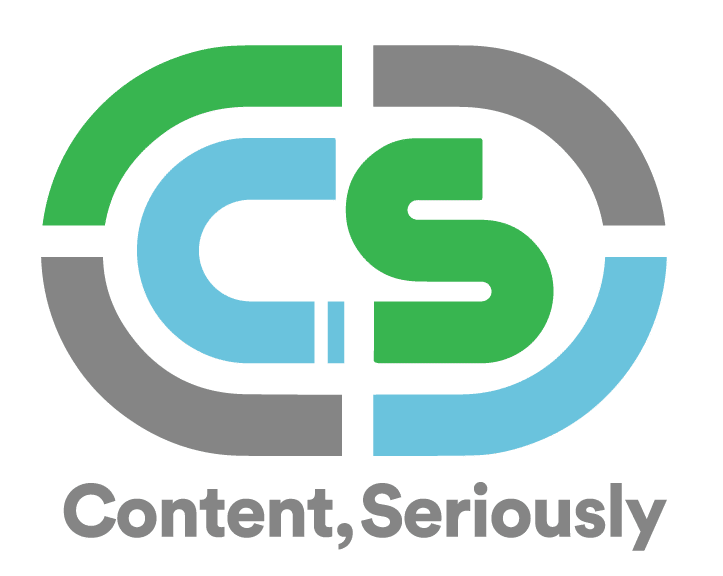Discovery is the first step in any project designed to solve a business problem or to reach a business goal that involves content. The Five Pillars framework is an approach adapted from standard management consulting methods into an inquiry method developed specifically for the discovery phase of content projects. The method draws out the salient information to ensure that the inquiry takes a holistic view of the issue at hand, particularly when it comes to discovering an operating model to improve content operations. The framework is a method I developed over the course of a number of years to focus on content-specific needs during a discovery. The framework provides an approach for an inquiry that gives a content strategist a rounded look at the circumstances that need improvement.
Standardised method of inquiry
The Five Pillars framework adapts basic management consulting processes to content turn-arounds. Familiar processes create as much confidence as the outcomes, which in turn, helps with buy-in from management. The vast majority of organisations – and, dare I say, the management consultants sent in to fix a content problem – don’t understand the inner workings of content, the pain points that content producers face, the efficiencies that can be garnered, or how to use content to further business goals. The Five Pillars approach is aimed at remediating that basic flaw of other inquiry processes.
The five pillars of content strategy
The Five Pillars framework is a cornerstone of the inquiry process, and helps shape the outcome in an efficient and effective way. The goal is to gather enough information about how the organisation currently works and their aspirations for a future state, and be able to reframe that information in a way that can be fed back to the client for validation, and suitable recommendations in each of the areas. The outcome is generally a summary that organises the information into logical buckets – in other words, the five pillars – so that management gets a clear picture of what’s happening in their organisation, with a series of recommendations.

The four phases of the content strategy process
The overall process consists of four phases: discovery, gap analysis, and recommendations, and a roadmap.
Discovery
During the discovery phase, determine what business problem the organisation is trying to solve, or what business goal they aspire to achieve. Using the Five Pillars framework helps you ask a range of questions to tease out hidden needs, and extrapolate the salient points. The outcome is information that frames the questions for the next phase: the gap analysis.
Gap analysis
During the gap analysis, you will determine what the organisation is doing now – the current state – and what business value the organisation wants their content to deliver – the future state – and what the gap is between these states. That will tell you what’s missing, and what they need to succeed.
The questions that get asked during discovery and the gap analysis can range wildly. Using the Five Pillars framework will help focus your questions. This approach gives you a way to structure your interviews, and to synthesise the results in a way that addresses the five umbrella areas of any organisation.
By the time you’ve developed the strategy, you’ll want to have asked questions about each of the five pillars. This will help you understand:
- the business problem
- the current and future states, so that you can calculate the gap
- conditions that might affect how you put together the roadmap, such as budget, governance, or infrastructure constraints.
Recommendations and roadmap
From the discovery and gap analysis, there should be enough evidence gathered for you to pull together a series of recommendations for how to move forward, and for a high-level roadmap to get the organisation to where they want to be. The roadmap is the synthesis of the work done in previous phases. There are no cookie-cutter businesses, and no cookie-cutter roadmaps, and each set of recommendations is highly situational. The roadmap will be an extension of the recommendations, and provide the organisation with a way forward. The roadmap should show how the strategy addresses each of the recommendations from the gap analysis, what steps the organisation needs to take, and in which order.
Using the five pillars framework
The five pillars framework is an overview, a tool to add to your toolkit for the part of the discovery phase and gap analysis related to the questions posed during interviews. Within the activities applicable to each pillar, you will most certainly employ the familiar techniques of conducting a content inventory and audit, carrying out a qualitative analysis, looking at personas, analysing metadata, and so on.
The questions included in the download are generic and meant as a starting point for deeper investigation. Your questions will certainly be deeper and more focused in each of the areas. The framework helps you ensure that the questions you ask of an organisation are balanced across the five areas and the four stages.

ABOUT THE AUTHOR
Rahel Anne Bailie, Content, Seriously
Rahel is a results-driven, seasoned consultant with extensive experience in digital transformation. She has a strong track record of delivering end-to-end content systems in the context of digital strategy projects, often in environments with complex content delivery requirements. A professional who delivers the hard truths and sometimes difficult prescriptions that help organisations leverage their content as a business asset.


 Content and context: content is not data
Content and context: content is not data